The Whitsunday islands will offer quality fishing in September for a range of tropical sportfish. GT in particular will be great fish to target as the water temperature is heating up after the colder months.
GT, otherwise known as giant or great trevally, are an awesomely strong tackle-testing fish that can easily break heavy braided lines in sharp reefy areas. So how can they be targetted and where?
One technique that is very effective on GT is to cast stickbaits and poppers, like the Nomad Dogtooth, Ulua and Cubera, around the areas where they live and feed. These places usually have a combination of deepwater nearby and rocky or reefy terrain. GT will feed on all sizes of baits, and the Nomad range of lures are excellent sizes for the biggest GT.
Often while casting these lures, it’s best to stay out from the zone and make long casts right alongside the features you’re fishing. Most of the GT holding to rocky areas will hang around 5-10m down and close in to the structure. By making lengthy casts alongside these areas, it will give you a good retrieve line back to the boat and will keep your lure in the zone where the GT are hanging.
Wherever you find lots of bait in these areas, there will be GT close by. Fusiliers, mullet, herring and garfish are all excellent food items for GT and the large schools of bait and big fish will always be close together.
Many other species can be successfully targetted with lures and baits in the Whitsundays as the days get warmer in September. All of the reef species are available on plastics and cut/live baits around the fringing reefs, deep rocky headlands and deep water.
A technique that is worth trying if you have a quality light spin rod and reel, some soft plastic lures and a sounder is to get some pilchards and berley around the deep rocky points where the strong currents pour past. Pelagic species often come past these major points throughout the day and night moving to different locations. Reef species also use these points as cover and hide in among the large boulders and crevices that form the rocky headlands.
Anchoring up and throwing in berley to attract fish is a great way of bringing fish to the boat. Then, cast soft plastics around the trail and imitate a fish feeding on the berley. This can produce a variety of fish from different types of mackerel to queenfish to more rare encounters such as cobia.
It can be a very fun technique when the fish are around, as you usually don’t know what you’re going to catch next!
If you live a long way from most of the barramundi impoundments and are keen to try and catch some big fish, we recommend organising a trip in September. It’s a great time of year – it’s not too hot, the water is warming up and impoundment barramundi are usually feeding and moving around more.
Peter Faust Dam is a great place to go, as there are plenty of new weedy edges and deep snag-piles to catch big barra from. A four or five day camping trip is a great option as you can learn from each day and therefore increase your chances after each day. You can also plan you’re techniques and strategies at night for the next session.
We recently fished Lake Monduran with Lake Awoonga Barra fishing guide Johnny Mitchell. We had some great captures all on cast lures with the biggest fish measuring 116cm caught by Johnny.
The size of the fish at Monduran was very impressive; the 116cm was a huge fish with a very broad, chunky back and belly. We all agreed that many of the Monduran barra were big and fat because every time that we looked at the sounder screen, there was some type of bait showing up. It must be hard for them to resist all the bait that is constantly moving past!
Reads: 4399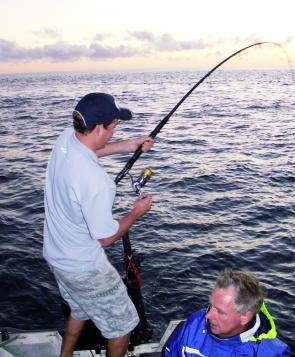
Fishing big stickbaits when the sun is just rising can interest any size of GT, from small to mega size!
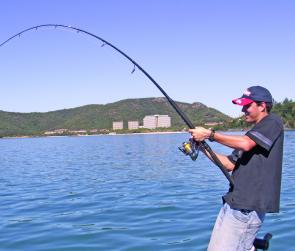
Hooked up to a hefty GT with the resort of Hamilton Island in the background.
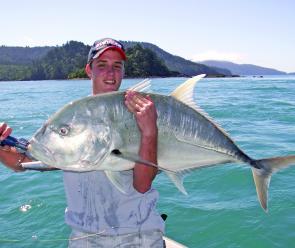
Another GT captured on the largest version of the Nomad Ulua stickbait.
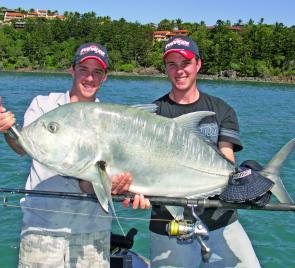
This GT was caught on a Nomad Ulua stickbait with 80lb Fins braid, 150lb Jinkai leader, a Shimano Stella 8000 and TCurve Bluewater spin rod.
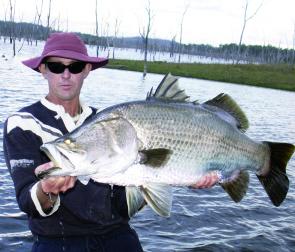
Johnny Mitchell holds up a 98cm barramundi but not for long – they are heavy fish!




